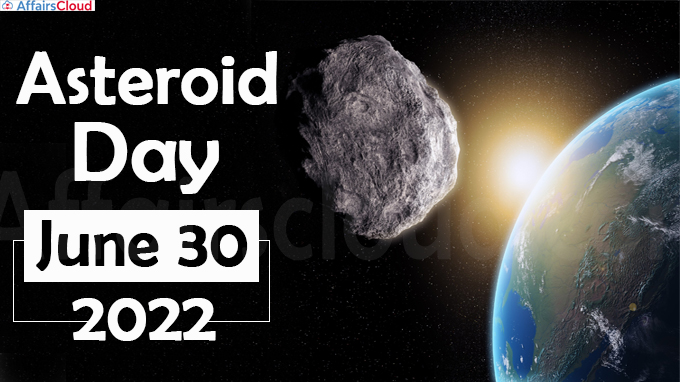
The United Nations(UN)’s International Asteroid Day is annually observed across the globe on 30th June to create awareness about the hazards of an asteroid impact. The day also aims to educate the public about the crisis communication actions to be taken at the global level in case of a credible Near-Earth Object(NEO) threat.
Background:
i.The United Nations General Assembly (UNGA) adopted the resolution A/RES/71/90 on 6th December 2016 and proclaimed the 30th June of every year as the International Asteroid Day.
ii.The observance of the day was proposed by the Association of Space Explorers, which was endorsed by the Committee on the Peaceful Uses of Outer Space (COPUOS).
iii.The first ever International Asteroid Day was observed on 30th June 2017.
History:
Asteroid Day was co-founded by astrophysicist and famed musician Dr Brian May of the rock group Queen, Apollo 9 astronaut Rusty Schweickart, filmmaker Grig Richters, and B612 Foundation President Danica Remy, to educate the public about the importance of asteroids
Why June 30?
30th June marks the anniversary of Earth’s largest asteroid impact, the Siberia Tunguska event, which occurred on 30th June 1908.
Siberia Tunguska event:
i.Siberia Tunguska event was a ~12 megaton explosion that occurred near the Podkamennaya Tunguska River in Yeniseysk Governorate of Eastern Siberia (now Krasnoyarsk Krai), Russia. It flattened 830 square miles of Siberian forest.
ii.The event was caused by an asteroid (large meteoroid) perhaps 50–100 metres (150–300 feet) in diameter and having a stony or carbonaceous composition.
Near-Earth objects (NEOs)
Near-Earth objects (NEOs) are asteroids or comets that pass close to the orbit of Earth.
According to the Center for NEO Studies under NASA, there are more than 16000 Near Earth Asteroids discovered.
International response to NEO impact threat:
Committee on the Peaceful Uses of Outer Space (COPUOS) endorsed the recommendations for an international response to a NEO impact threat in 2013 and established the International Asteroid Warning Network (IAWN) and the Space Mission Planning Advisory Group (SMPAG) in 2014.
- IAWN uses well-defined communication plans and protocols to assist Governments in the analysis of possible consequences of an asteroid impact and to support the planning of mitigation responses.
- SMPAGis an inter-space agency forum that identifies technologies needed for near-Earth Object deflection, and aims to build consensus on recommendations for planetary defence measures.
Efforts of UN:
i.The United Nations Office for Outer Space Affairs (UNOOSA) supports all nations to access and leverage the benefits of space to accelerate sustainable development.
iii.UNOOSA, which worked on NEO, has recognised NEO impact hazards as global issues demanding an international response.
About United Nations Office for Outer Space Affairs (UNOOSA):
UNOOSA Acting Director– Niklas Hedman
Headquarters– Vienna, Austria




